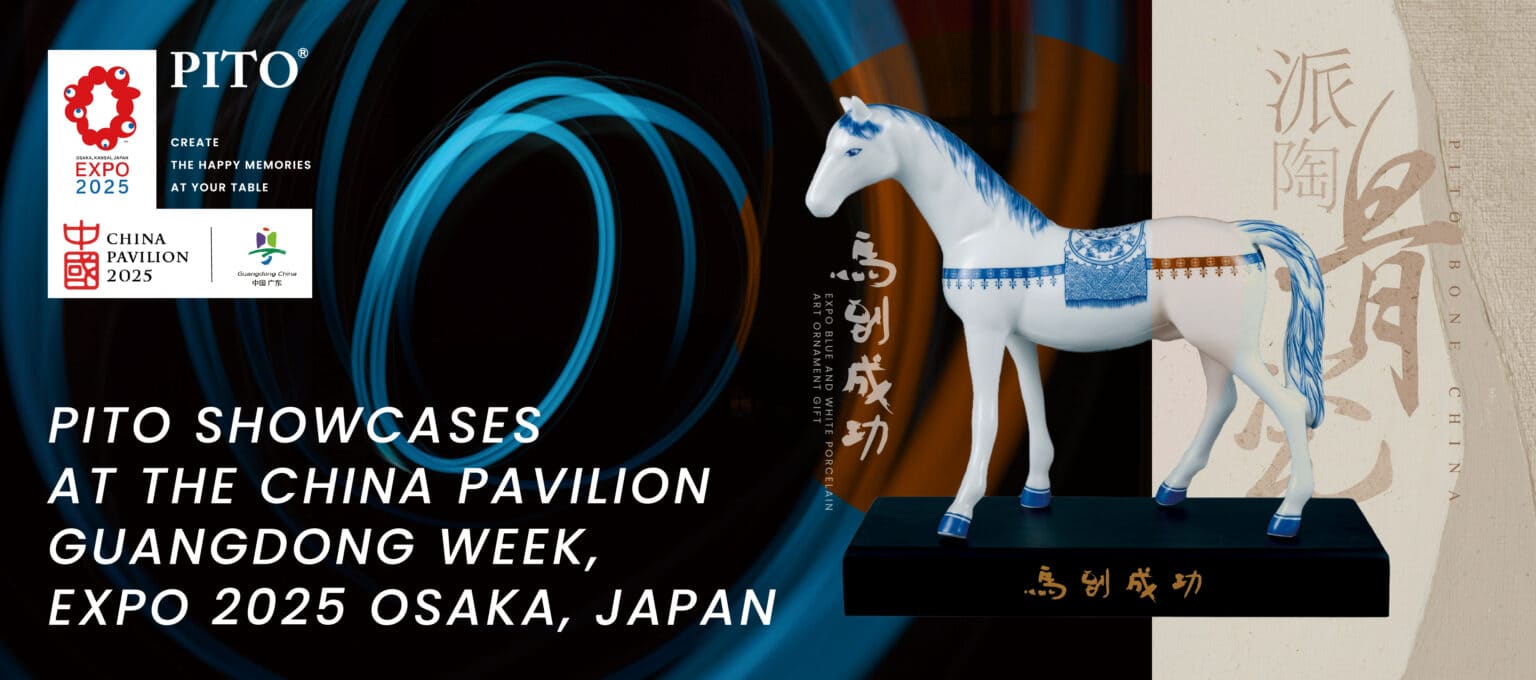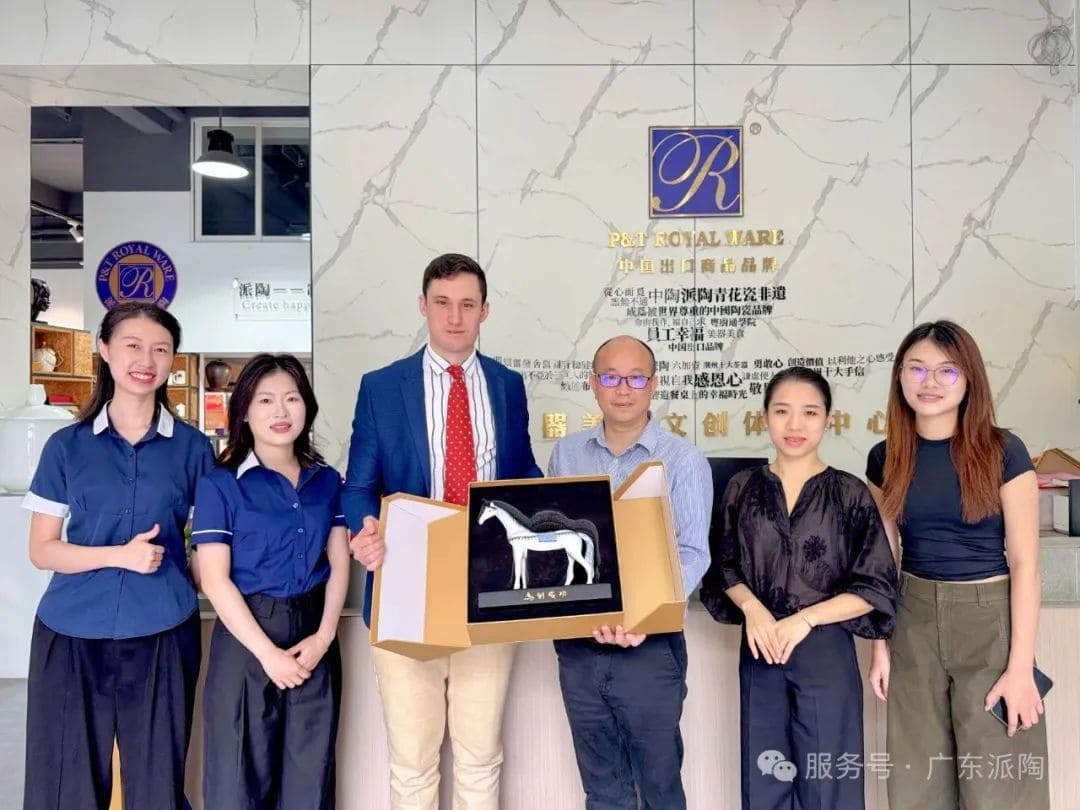Considered the most refined and luxurious tableware material, bone china adds a sophisticated classic and contemporary design to any dining table. Read this article and you will learn what bone china is, what is bone china made from, how to make bone china and how to maintain them.
What is Bone China Crockery?

source: Pito
Bone china crokery , defined as “a vessel with a translucent body”, is one of the strongest types of porcelain or china, with very high mechanical and physical strength and resistance to chipping, and is known for its high level of whiteness and translucency.
In the mid-18th century, English potters were unsuccessful in producing hard porcelain, but they found that ashes were a useful addition to their soft porcelain mixtures to add strength. From its initial development until the second half of the 20th century, bone china was almost exclusively a British product, with most major British companies making or still making it. In the 20th century it began to be produced elsewhere, including Russia, China and Japan.
Bone china crokery brings many benefits to the home dining experience. It is one of the strongest of porcelain, meaning it has the potential to last through everyday use and the usual accidental slip of the hand or knocking it off the table. Bone china is a luxurious and precious material and as such will last for decades and sustain family memories through the generations.
Bone China Dinnerware Materials

source: pixabay
Is bone china made from bones? You may have questions like this. Indeed, as its name implies, bone china dinnerware is a type of porcelain made of ashes, feldspar material and kaolin clay. A typical recipe is 50% bone ash, 25% Cornwall Stone and 25% kaolin. The quality of the porcelain hinges on the quality of the materials, especially the kaolin, it needs to be low in iron and low in titanium .
Bone china made of what animal? As we mentioned earlier, bone china is made from ‘ashes’, which are animal bones (usually those of cattle) mixed into the ceramic material ashes. But where do the ashes come from? It comes from animal bones discarded in slaughterhouses, the meat and gum stuck to the bones are removed and the raw bones are then calcined, i.e. heated to a temperature of 1000°C to 1250°C. This is done to remove the organic material and make it usable. The main chemical components are calcium oxide and phosphorus pentoxide.
Interestingly, some rare versions of bone china are also made from human bone, which many Americans choose to use to make bone china. It is more of a sacred object, used in memory of a deceased loved one.
How to Make Bone China Dinnerware

source: pixabay
If you’ve read this far, I’m sure you know a thing or two about bone china and making your own!
The bone china crockery manufacturing process consists of the following steps:
Step 1. Clay Making
How to make bone china clay? The raw materials are mixed with water in a certain proportion and then mixed at high speed in a ball mill, forming slurry in this step. The grinding time depends on the size of the particles, usually around 24 hours, and the whole process of making the slurry is involved.The slurry is sieved to remove iron and other impurities. Once the final mix is prepared, it is pumped through a filter press to remove air and water from the mix – the moisture level is reduced to around 20% to form the mud blocks. A huge slicer divides each mud block into several mud discs.
Step 2. Moulding
In this step the clay is thinned and poured into the moulds, here we skip the process of making the moulds as this requires a high level of skill, be it cups, bowls, bone china dinner plates, etc. We need to use the shape of the mould to produce the product, this is called moulding. Depending on the shape, there are different methods of moulding. The main method of forming is casting. Casting methods can be further divided into high pressure casting and hand casting. Liquid clay is poured into each mould. As the plaster mould absorbs the water, the walls of the cup are formed. After a few hours, the cups are dry and can be removed from the moulds without deformation.
The formed bodies, known as ‘greenware’, is allowed to dry and then cast and polished by gently rubbing away the scratches on the surface with sponge water, after which the uneven and rough surface of the bone china greenware becomes smooth.
Step 3. First Firing
After the green ware has dried, it is prepared for the first firing. Unlike traditional porcelain making, the first firing of bone china, known as ‘biscuit firing’, takes place in the oxidising atmosphere of a biscuit kiln at a temperature of around 1200 to 1300 degrees centigrade and the product is fired for more than 15 hours. The green ware is aluminised to make it durable, white and translucent.
Step 4. Glazing
So what makes bone china so strong? Apart from the ashes, the other thing is the glaze. Think of it as liquid glass which, once heated, forms a very strong protective shell. Bone china glazes are a mixture of ashes and kaolin clay. As the biscuit (the raw biscuit after the initial firing) is non-absorbent, it needs to be sprayed with glaze. The glaze is hand-dipped or machine-glazed and serves to protect and decorate the biscuit.
Step 5. Gloss Firing
After the glaze has dried, the product is fired for a second time in a glazing kiln above 1000°C for 8 hours. To avoid direct exposure to the flames, the glazed biscuits are placed in saggars. The saggars are stacked on kiln carts and fed into the tunnel kiln. When the temperature rises to 1200 degrees Celsius, the glaze melts and fuses with the biscuits. All the biscuit vessels that emerge from the kiln are subjected to rigorous inspection and once cooled, the products are checked and any imperfections are ground off and only a few are allowed to go on to the decorating stage.
Step 6. Decoration & Decoration Firing
Painting, gilding, and hand painting are normal decoration techniques for bone china. This procedure can be done by hand or by machine. If done by hand, the bone china needs to be cleaned in order to prevent any dust. After decoration, the piece is fired at a temperature of 700 to 800 degrees Celsius in order to melt the pigments into the glaze and to permanently shape the surface of the porcelain.
How to Clean & Maintain Bone China Dinnerware

Here are some tips for cleaning porcelain dinnerware:
- Wash dishes to remove any acidic or sticky food residues;
- When washing by hand, use a mild liquid detergent and a non-abrasive rag;
- Prevent scratching and breaking your bone china cutlery by placing it in a fabric covered storage box.
Key Takeaway
After reading this article, you must know how much is bone china worth. Indeed, bone china is an artefact of human ingenuity, and today there are many well-known bone china brands for consumers to choose from, such as Royal Doulton, Mintons,Pito bone china dinnerware, Aynsley etc. You can shop from these brands or choose to make them yourself by following the steps above.


